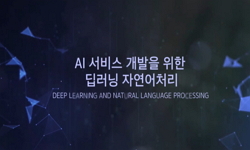Forward osmosis (FO) process is a chemical potential driven process, where highly concentrated draw solution (DS) is used to take water through semi-permeable membrane from feed solution (FS) with lower concentration. Recently, commercial FO membrane ...
http://chineseinput.net/에서 pinyin(병음)방식으로 중국어를 변환할 수 있습니다.
변환된 중국어를 복사하여 사용하시면 됩니다.
- 中文 을 입력하시려면 zhongwen을 입력하시고 space를누르시면됩니다.
- 北京 을 입력하시려면 beijing을 입력하시고 space를 누르시면 됩니다.
https://www.riss.kr/link?id=A107315848
- 저자
- 발행기관
- 학술지명
- 권호사항
-
발행연도
2021
-
작성언어
Korean
-
주제어
Forward osmosis ; FO ; Membrane module ; Flux prediction ; Deep learning ; 정삼투 ; 막모듈 ; 플럭스 예측 ; 딥러닝
-
등재정보
KCI등재
-
자료형태
학술저널
- 발행기관 URL
-
수록면
93-100(8쪽)
-
KCI 피인용횟수
0
- 제공처
- 소장기관
-
0
상세조회 -
0
다운로드
부가정보
다국어 초록 (Multilingual Abstract)
Forward osmosis (FO) process is a chemical potential driven process, where highly concentrated draw solution (DS) is used to take water through semi-permeable membrane from feed solution (FS) with lower concentration. Recently, commercial FO membrane modules have been developed so that full-scale FO process can be applied to seawater desalination or water reuse. In order to design a real-scale FO plant, the performance prediction of FO membrane modules installed in the plant is essential. Especially, the flux prediction is the most important task because the amount of diluted draw solution and concentrate solution flowing out of FO modules can be expected from the flux. Through a previous study, a theoretical based FO module model to predict flux was developed. However it needs an intensive numerical calculation work and a fitting process to reflect a complex module geometry. The idea of this work is to introduce deep learning to predict flux of FO membrane modules using 116 experimental data set, which include six input variables (flow rate, pressure, and ion concentration of DS and FS) and one output variable (flux). The procedure of optimizing a deep learning model to minimize prediction error and overfitting problem was developed and tested. The optimized deep learning model (error of 3.87%) was found to predict flux better than the theoretical based FO module model (error of 10.13%) in the data set which were not used in machine learning.
목차 (Table of Contents)
- ABSTRACT
- 1. 서 론
- 2. 연구 방법
- 2.1. 딥러닝에 사용된 FO 막모듈 실험 데이터
- 2.2 딥러닝 모델 구축
- ABSTRACT
- 1. 서 론
- 2. 연구 방법
- 2.1. 딥러닝에 사용된 FO 막모듈 실험 데이터
- 2.2 딥러닝 모델 구축
- 2.3 딥러닝 모델의 변동성 및 과적합 분석
- 3. 결과 및 토의
- 3.1 딥러닝 모델의 변동성 평가 및 최소화 방안
- 3.2 검증 오차를 최소화하기 위한 딥러닝 모델 최적화
- 3.3 딥러닝 모델의 과적합 분석
- 4. 결 론
- References
참고문헌 (Reference)
1 지상민, "학습률(Step-Size)변화에 따른 디지털 신호의 기계학습 방법 개선" 한국디지털정책학회 18 (18): 261-268, 2020
2 전종민, "통계기반 정삼투 모듈 모델의 적용성 검토" 대한환경공학회 41 (41): 611-618, 2019
3 배경태, "인공신경망의 은닉층 최적화를 통한 농산물 가격예측 모델" 한국정보기술학회 14 (14): 161-169, 2016
4 전종민, "와권형 정삼투 막모듈의 성능 분석" 대한환경공학회 40 (40): 481-486, 2018
5 조준모, "빅데이터의 정규화 전처리과정이 기계학습의 성능에 미치는 영향" 한국전자통신학회 14 (14): 547-552, 2019
6 이상민, "머신러닝 기법을 활용한 낙동강 중류 지역의 Chl-a 예측 알고리즘 비교 연구(수질인자 및 수량 중심으로)" 대한상하수도학회 34 (34): 275-286, 2020
7 이도연, "딥러닝을 이용한 음악흥행 예측모델 개발 연구" 한국콘텐츠학회 20 (20): 10-18, 2020
8 주기훈, "기계학습 옵티마이저 성능 평가" 한국전기전자학회 24 (24): 766-776, 2020
9 Jang, I. D., "The analysis telecommunication service market with data mining" 28 (28): 1-3, 2001
10 Cho, Y. H., "Study on the activation functions for efficient learning in DNN" The Institute of Electronics and Information Engineers 800-803, 2016
1 지상민, "학습률(Step-Size)변화에 따른 디지털 신호의 기계학습 방법 개선" 한국디지털정책학회 18 (18): 261-268, 2020
2 전종민, "통계기반 정삼투 모듈 모델의 적용성 검토" 대한환경공학회 41 (41): 611-618, 2019
3 배경태, "인공신경망의 은닉층 최적화를 통한 농산물 가격예측 모델" 한국정보기술학회 14 (14): 161-169, 2016
4 전종민, "와권형 정삼투 막모듈의 성능 분석" 대한환경공학회 40 (40): 481-486, 2018
5 조준모, "빅데이터의 정규화 전처리과정이 기계학습의 성능에 미치는 영향" 한국전자통신학회 14 (14): 547-552, 2019
6 이상민, "머신러닝 기법을 활용한 낙동강 중류 지역의 Chl-a 예측 알고리즘 비교 연구(수질인자 및 수량 중심으로)" 대한상하수도학회 34 (34): 275-286, 2020
7 이도연, "딥러닝을 이용한 음악흥행 예측모델 개발 연구" 한국콘텐츠학회 20 (20): 10-18, 2020
8 주기훈, "기계학습 옵티마이저 성능 평가" 한국전기전자학회 24 (24): 766-776, 2020
9 Jang, I. D., "The analysis telecommunication service market with data mining" 28 (28): 1-3, 2001
10 Cho, Y. H., "Study on the activation functions for efficient learning in DNN" The Institute of Electronics and Information Engineers 800-803, 2016
11 Kim, J. E., "Practical considerations for operability of an 8“ spiral wound forward osmosis module:Hydrodynamics, fouling behaviour and cleaning strategy" 404 : 249-258, 2017
12 Caruana, R., "Overfitting in neural nets: backpropagation, conjugate gradient, and early stopping" 402-408, 2002
13 Ciresan, D. C., "Multi-Column Deep Neural Network for Traffic Sign Classification" 32 : 333-338, 2012
14 "Google Tensorflow"
15 Kim, J. E., "Forward osmosis membrane modular configurations for osmotic dilution of seawater by forward osmosis and reverse osmosis hybrid system" 128 : 183-192, 2018
16 김수빈, "Forward osmosis membrane filtration for microalgae harvesting cultivated in sewage effluent" 대한환경공학회 20 (20): 99-104, 2015
17 Kum, D., "Development and Assessment for extended daily streamflow regression equation of TMDL station using Machine Learning" 289-290, 2017
18 Cireşan, D. C., "Deep neural networks segment neuronal membranes in electron microscopy images" 2843-2851, 2012
19 Lee, J., "A statistics-based forward osmosis membrane characterization method without pressurized reverse osmosis experiment" 403 : 36-45, 2017
20 Jeon, J., "A simple modeling approach for a forward osmosis system with a spiral wound module" 433 : 120-131, 2018
동일학술지(권/호) 다른 논문
-
파일럿 플랜트 규모에서 일체형 침전부상공정 (SeDAF)의 설계인자 및 운전특성에 대한 실증적 평가
- 대한상하수도학회
- 장여주
- 2021
- KCI등재
-
주입 압력파의 웨이블릿 일관성 분석을 사용한 저수조-관로-밸브 시스템에서의 누수탐지모형 연구
- 대한상하수도학회
- 고동원
- 2021
- KCI등재
-
Ferrate(VI)를 이용한 다양한 수중 환경에서의 tetracycline의 분해 특성 및 반응 경로 연구
- 대한상하수도학회
- 박경덕
- 2021
- KCI등재
-
계량서지적 분석을 활용한 핵심 담수화 기술의 연구 동향
- 대한상하수도학회
- 이경훈
- 2021
- KCI등재
분석정보
인용정보 인용지수 설명보기
학술지 이력
| 연월일 | 이력구분 | 이력상세 | 등재구분 |
|---|---|---|---|
| 2026 | 평가예정 | 재인증평가 신청대상 (재인증) | |
| 2020-12-28 | 학술지명변경 | 외국어명 : Journal of the Korean Society of Water and Wastewater -> Journal of Korean Society of Water and Wastewater |  |
| 2020-01-01 | 평가 | 등재학술지 유지 (재인증) |  |
| 2017-01-01 | 평가 | 등재학술지 유지 (계속평가) |  |
| 2013-01-01 | 평가 | 등재학술지 유지 (등재유지) |  |
| 2010-01-01 | 평가 | 등재학술지 유지 (등재유지) |  |
| 2008-01-01 | 평가 | 등재학술지 유지 (등재유지) |  |
| 2006-01-01 | 평가 | 등재학술지 유지 (등재유지) |  |
| 2003-01-01 | 평가 | 등재학술지 선정 (등재후보2차) |  |
| 2002-01-01 | 평가 | 등재후보 1차 PASS (등재후보1차) |  |
| 2000-07-01 | 평가 | 등재후보학술지 선정 (신규평가) |  |
학술지 인용정보
| 기준연도 | WOS-KCI 통합IF(2년) | KCIF(2년) | KCIF(3년) |
|---|---|---|---|
| 2016 | 0.2 | 0.2 | 0.21 |
| KCIF(4년) | KCIF(5년) | 중심성지수(3년) | 즉시성지수 |
| 0.19 | 0.15 | 0.342 | 0.01 |





 ScienceON
ScienceON 코리아스칼라
코리아스칼라







